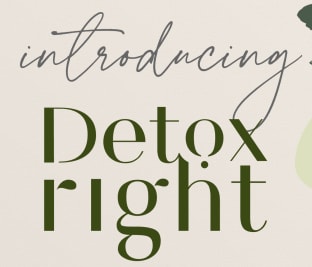Medical doctor
Medical doctor
Dr. Chen is a medical doctor with 15 years of clinical experience. She is board certified in the UK in both internal medicine and family practice, and now lives in California with her family.

Image by Jodie Johnson / Stocksy
January 16, 2023
Our editors have independently chosen the products listed on this page. If you purchase something mentioned in this article, we may
According to one estimate from the Environmental Working Group, the average American woman is exposed to 168 chemicals a day—from her personal care routine alone.
Advertisement
This ad is displayed using third party content and we do not control its accessibility features.
Although not all chemicals pose health concerns, I prefer to be choosy about all my bathroom products, especially because the U.S. is notoriously lax about regulation compared to other countries. The European Union, for example, follows a precautionary approach where chemicals need to be proven safe before being used in products. The EU has banned or restricted thousands of chemicals in personal care products, while the U.S. has banned only around 30 chemicals1.
With this in mind, here are the top five things I stay away from in my bathroom. Reducing toxins in the home can feel daunting but it’s important to remember that little steps can make a huge difference over time. To combat overwhelm, decide on just one thing from this list to swap at a time.
1.
Dental floss that contains PFAS.
Most people know to be picky about non-stick cookware because it can contain PFAS—a group of chemicals that makes products water-, grease-, and oil-resistant that have been linked to hormone disruption, reproductive issues2, and certain cancers3.
But did you know that dental floss can also contain PFAS? A 2019 study in Nature found that using coated floss4 was associated with higher levels of PFAS markers in the blood. That said, it is important to floss for oral health. When you do, just avoid marketing terms like ‘glide’, ‘smooth’, and ‘slide’, and instead, look for PFAS-free brands. (Boka and Cocofloss are my two favorites).
Advertisement
This ad is displayed using third party content and we do not control its accessibility features.
2.
Conventional body lotion.
I am picky about body lotion because the presence of water naturally requires preservatives to avoid microbial contamination; some of which are problematic. Some names to know: parabens are associated with endocrine disruption5, while DMDM hydantoin and Quaternium-15 both release formaldehyde, an IARC class 1 carcinogen6. Polyethylene glycol (PEG) can be added to thicken and emulsify, but it acts as a penetration enhancer (i.e. it helps the other harmful chemicals penetrate the skin easier). If you use lotion, I recommend one that is made without these potentially harmful preservatives.
Don’t shoot the messenger! I know perfumes are coveted, and we’re encouraged to smell like artificially scented flowers. But fragrances often contain phthalates, which have been associated with hormone disruption7, with downstream effects8 on weight, blood sugar regulation (insulin resistance), thyroid health, fertility, and more.
In fact, anything with the term “Fragrance” in the ingredient list begs further investigation and questioning because this is an umbrella term that can describe any number of ingredients.
Advertisement
This ad is displayed using third party content and we do not control its accessibility features.
The FDA stipulates that any foaming bath product carries the following warning: “Excessive use or prolonged exposure may cause irritation to skin and urinary tract.” This warning is there because in order to generate foam, you need ingredients like sodium lauryl sulfate (SLS), which can disrupt the skin barrier and cause irritation and allergic reactions in some people9. Its sister compound, Sodium Laureth Sulfate (SLES), supposedly causes less irritation. However, because it is an ethoxylated compound, there is a risk it carries a contaminant called 1, 4 dioaxane (a likely carcinogen according to the EPA10). In addition, bubble baths are usually loaded with the aforementioned fragrances, and Polyethylene Glycol; another penetration enhancer.
If you like taking baths (who doesn’t?), I recommend opting for Epsom salt baths instead. And if you like a relaxing scent, diffuse some high-quality essential oils into the air during your soak.
Our oral microbiome plays an important role in the health of our gums and teeth, but most mouthwashes wreak havoc on it. Think of mouthwash as an inappropriately prescribed antibiotic that kills both bad and good bacteria at the same time. Sometimes antibiotics are necessary and life-saving, but we wouldn’t want to use them every day for no good reason!
Advertisement
This ad is displayed using third party content and we do not control its accessibility features.
The takeaway.
There are just a few small changes that can make a big difference in the health of your bathroom. It is also important to remember that we have detox organs that help us eliminate daily exposures we cannot avoid. If we support our detox organs with healthy foods and lifestyles, they will help us eliminate some of these exposures so we don’t build a high toxic load.
If you want to learn how to reduce toxins in your homes with me in an easy, step-by-step way, and support your detox organs using science-based methods (without the gimmicky quick fixes that don’t work), join my signature course Detox Right. Use code MBG200 to get $200 off.
Advertisement
This ad is displayed using third party content and we do not control its accessibility features.


